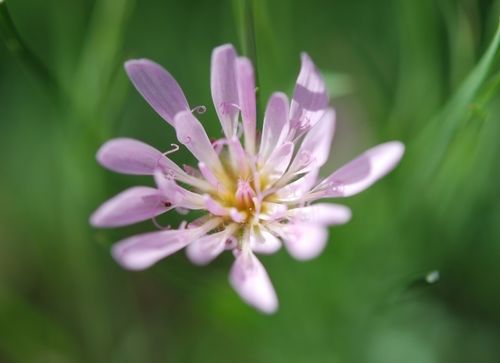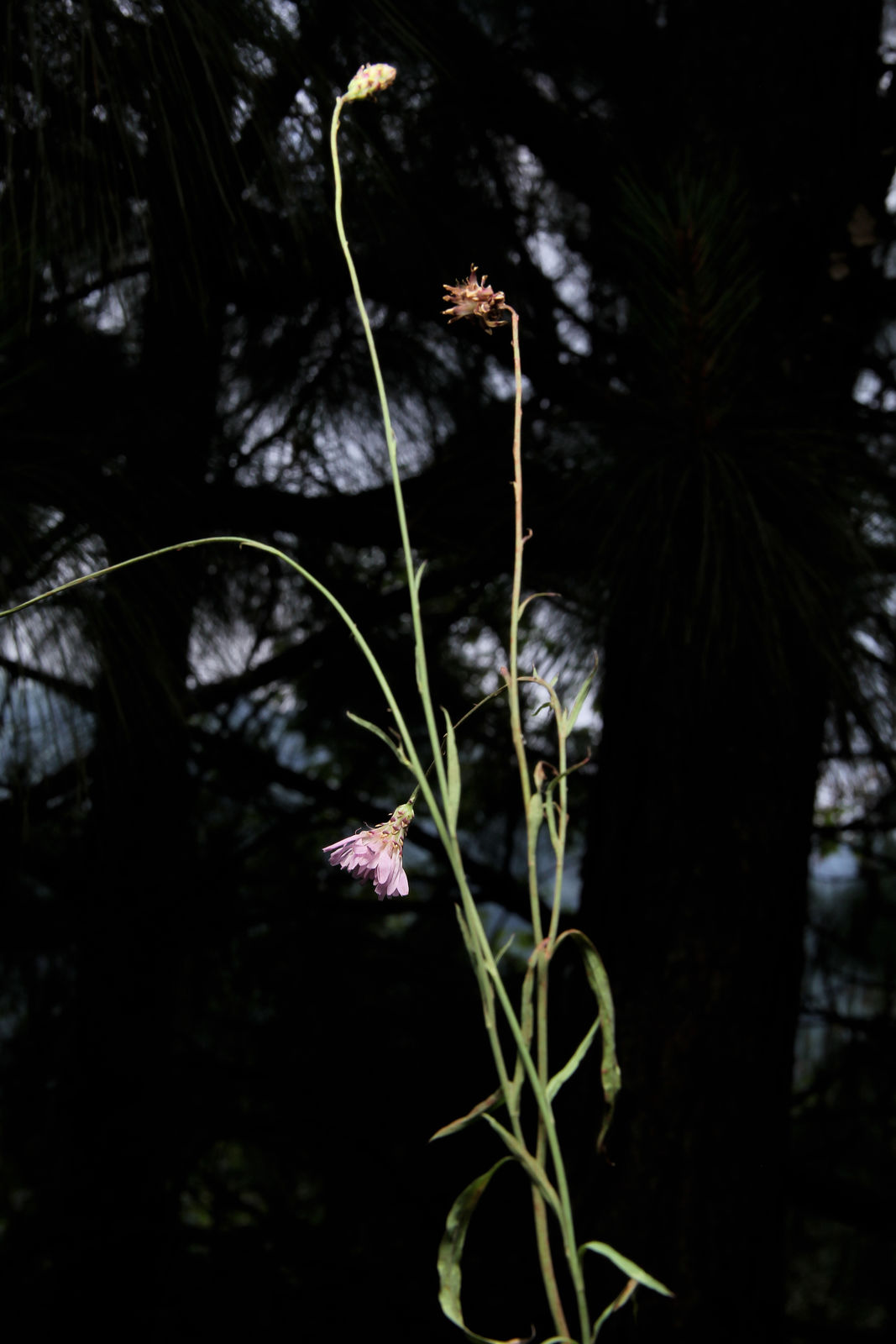Family: Asteraceae
Author: (Less.) Less.
Bibliography: Syn. Gen. Compos.: 143 (1832)
Year: 1832
Status: accepted
Rank: species
Genus: Pinaropappus
Vegetable: False
Observations: Arizona to Oklahoma and Mexico
Description
Rock-lettuce, scientifically known as Pinaropappus roseus, is a fascinating plant species that belongs to the Asteraceae family. This species was first described in the seminal work “Syn. Gen. Compos.: 143” in 1832 by the botanist Christian Friedrich Lessing, whose name is often abbreviated as Less.
The plant is notable for its striking appearance and adaptability, commonly found across a range of geographical regions spanning from Arizona and Oklahoma in the United States to Mexico. This broad distribution is a testament to its resilience and versatility in various climates and soil types.
Rock-lettuce is easily identified by its distinctive rosy-colored flowers, which bloom in clusters, creating a delicate yet vibrant display. The blooms are usually seen during the spring and early summer months, adding splashes of color to the natural landscape. The plant’s foliage is also noteworthy; its leaves are often lance-shaped and exhibit a beautiful green hue that serves as an excellent backdrop to its floral arrangement.
This species thrives in rocky, well-drained soils, which is indicative of its common name, “Rock-lettuce.” Due to its preference for such challenging environments, Pinaropappus roseus is considered an ideal plant for xeriscaping—a landscaping method that reduces or eliminates the need for irrigation. Its ability to flourish with minimal water makes it a valuable plant for gardeners in arid and semi-arid regions.
In addition to its ornamental value, Rock-lettuce plays a role in the local ecosystem. It serves as a source of nectar for various pollinators, including bees and butterflies, supporting the pollination process critical for the survival of many plant species. Furthermore, its presence can help prevent soil erosion in rocky terrains, contributing to soil stability and health.
Overall, Pinaropappus roseus is a remarkable species that combines beauty with ecological benefits. Its wide distribution, adaptability, and aesthetic appeal make it a plant worth noting, whether for academic study, ecological landscaping, or simple appreciation of nature’s diversity.
Common Names
Spa: clavelillo, hierba de recaida, motita morada
Eng: rock-lettuce, white rocklettuce, white-dandelion
En: Rock-lettuce, White-dandelion, White rocklettuce
Es: Clavelillo, Hierba de recaida, Motita morada
Synonyms
- Achyrophorus roseus (Less.)
Distribution
- Arizona (native)
- Mexico Central (native)
- Mexico Gulf (native)
- Mexico Northeast (native)
- Mexico Northwest (native)
- Mexico Southeast (native)
- Mexico Southwest (native)
- New Mexico (native)
- Oklahoma (native)
- Texas (native)
Additional Images
Flower
Taken Apr 13, 2015 by EOL − Opuntia Cadereytensis (cc-by-nc)
Taken Jun 7, 2019 by Ayesha Ayesha (cc-by-sa)
Taken Apr 25, 2021 by erick cuevas (cc-by-sa)
Taken Jul 31, 2022 by Roberts Liz (cc-by-sa)
Taken Jul 18, 2022 by Saday Baltazar (cc-by-sa)
Habit
Taken Apr 19, 2014 by EOL − Luis Rodriguez (cc-by-nc)
Taken Apr 19, 2014 by EOL − Luis Rodriguez (cc-by-nc)
Taken Apr 17, 2014 by EOL − Kenneth Bader (cc-by-nc)
Taken Oct 20, 2015 by EOL − herrom (cc-by-nc)
Taken Apr 29, 2013 by EOL − Richard Spellenberg (cc-by-nc-sa)
Fruit
Taken Apr 29, 2013 by EOL − Richard Spellenberg (cc-by-nc-sa)

© copyright of the Board of Trustees of the Royal Botanic Gardens, Kew.

© copyright of the Board of Trustees of the Royal Botanic Gardens, Kew.

© copyright of the Board of Trustees of the Royal Botanic Gardens, Kew.
Sources
- WFO (No URL)
- IPNI (No URL)
- GBIF (https://www.gbif.org/species/3146563)
- POWO (http://powo.science.kew.org/taxon/urn:lsid:ipni.org:names:238407-1)
- PlantNet (https://identify.plantnet.org/species/the-plant-list/Pinaropappus roseus (Less.) Less.)
Specifications
Growth habit>: Forb/herb, Subshrub











